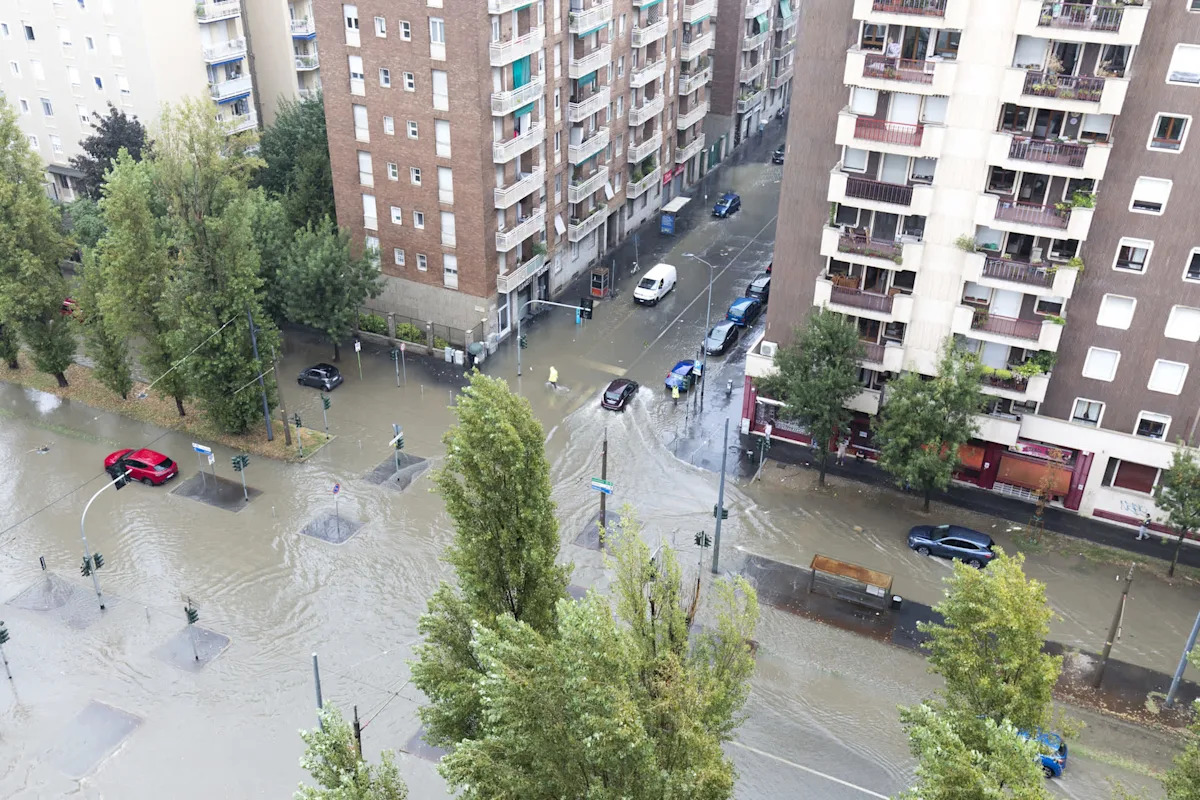Science
Researchers Unveil Advanced AI to Predict Floods More Accurately

Researchers from Pennsylvania State University and collaborating institutions have developed a groundbreaking model that significantly enhances the ability to predict floods. This new technology offers a faster and more accurate approach compared to traditional methods, which often rely on outdated data and time-consuming processes.
Chaopeng Shen, a professor of civil and environmental engineering, highlighted the model’s ability to create simulations for any region. The current standard used by hydrologists, the National Oceanic and Atmospheric Administration (NOAA) National Water Model, is known for its reliability but is hindered by its slow calibration process. Traditionally, it requires decades of river data for each site, making it a tedious and expensive endeavor.
Shen emphasized the advantages of their new method, stating, “With our new approach, we can create simulations using the same process, regardless of the region we are trying to simulate.” By leveraging artificial intelligence, the research team can quickly analyze vast amounts of data to identify patterns, eliminating the need to start from scratch for each river basin.
The neural network employed in this model generalizes information from past readings. Co-author Yalan Song explained, “Rather than approaching each site individually, the neural network applies general principles it interprets from past data to make predictions.” While the model adheres to established physics-based rules governing water behavior, it rapidly adapts to new areas, enhancing its predictive capabilities.
One challenge that remains is the impact of rare storms, which can disrupt predictive models. Song noted that the new system retains the principles of fluid dynamics while allowing the neural network to learn from these unusual events. This innovative approach has shown promise in predicting extreme rainfall with greater accuracy than older tools.
The researchers utilized 15 years of river data to train the system, subsequently testing its predictions against 40 years of historical streamflow records. Their results indicated that the model’s projections were approximately 30% closer to actual measurements across 4,000 sites.
Shen remarked on the efficiency of the new system, stating, “With a trained neural network, we can generate parameters for the entire U.S. within minutes.” Tasks that previously took weeks on multiple supercomputers can now be completed in hours on a single machine, marking a significant leap forward in disaster prediction technology.
The implications of this research extend beyond flood prediction. Similar methodologies have been employed in various fields, such as designing safer solid-state batteries and mapping urban vegetation for cooling strategies. AI is also being tested in nuclear fusion research, showcasing its versatility and potential for broad applications.
While the benefits of such advanced technologies are clear, it is important to address the environmental impact of developing these models. According to a study by Hugging Face and Carnegie Mellon University, some AI systems can consume as much electricity as a small country. Nevertheless, the industry is increasingly shifting towards renewable energy solutions, which could mitigate some of these concerns.
As researchers continue to refine their models, the hope is that this technology will not only save property but also provide families with the time they need to safeguard their lives during natural disasters.
-

 Lifestyle4 months ago
Lifestyle4 months agoLibraries Challenge Rising E-Book Costs Amid Growing Demand
-

 Sports3 months ago
Sports3 months agoTyreek Hill Responds to Tua Tagovailoa’s Comments on Team Dynamics
-

 Sports3 months ago
Sports3 months agoLiverpool Secures Agreement to Sign Young Striker Will Wright
-

 Lifestyle3 months ago
Lifestyle3 months agoSave Your Split Tomatoes: Expert Tips for Gardeners
-

 Lifestyle3 months ago
Lifestyle3 months agoPrincess Beatrice’s Daughter Athena Joins Siblings at London Parade
-

 World3 months ago
World3 months agoWinter Storms Lash New South Wales with Snow, Flood Risks
-

 Science4 months ago
Science4 months agoTrump Administration Moves to Repeal Key Climate Regulation
-

 Science3 months ago
Science3 months agoSan Francisco Hosts Unique Contest to Identify “Performative Males”
-

 Business4 months ago
Business4 months agoSoFi Technologies Shares Slip 2% Following Insider Stock Sale
-

 Science4 months ago
Science4 months agoNew Tool Reveals Link Between Horse Coat Condition and Parasites
-

 Sports4 months ago
Sports4 months agoElon Musk Sculpture Travels From Utah to Yosemite National Park
-

 Science4 months ago
Science4 months agoNew Study Confirms Humans Transported Stonehenge Bluestones









